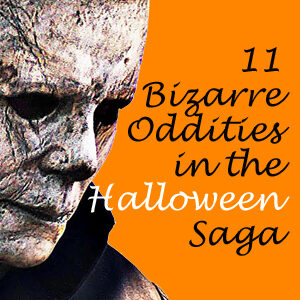“The Witch” — now available from Redbox – is a masterful, artistic blend of history and horror. While it seems like most genre films are of the haunted house/ancient curse variety, as with “The Conjuring 2,” a couple of outside-the-box horror pictures find their way into the mainstream every year. Last year, it was “It Follows” and “Maggie,” and so far we can call 2016 the season of “The Witch.”
While this film, originally titled “The VVitch: A New-England Folktale,” got a short theatrical release in February, it is best viewed at home, using the subtitle function. You’d be able to follow the plot without them, but I found that captioning clarified my understanding of the events and also showcased the meticulous scripting.
Writer-director Robert Eggers, whose background includes production design on similar historical works, pens a script in the speaking style of colonial New England, which isn’t quite the same as modern American English, particularly in sentence structure. A character might say “I’ll to the village” instead of “I’ll go to the village.” It’s easy to decipher the meaning when you see the words, not so much when you hear them spoken (Still, hats off to the actors for pulling it off, along with the English accents).
Initially feeling like a mood piece – with building, screeching string music playing atop slow zooms on a sepia-toned forest – “The Witch” ultimately gets under a viewer’s skin with its portrayal of a 17th century family that isn’t quite starving, but they know it’s a possibility. Headstrong patriarch William (Ralph Ineson) and his wife and five children have been excommunicated from their church/town for a disagreement over some aspect of religious doctrine.
A viewer gets an excellent feel for the hardship and drudgery – and persistent fear of starvation — of subsistence farming in a drought year (at one point, they sit down for a meal of bread and water), something that’s compounded by William’s not-so-great hunting prowess. A child might joke about eating a sibling, but you get the feeling that it’s only 95 percent a joke. When matriarch Katherine (Kate Dickie) worries that she’s lost her capacity for love, William says she’ll learn again in Heaven – it’s not a flippant line, it’s the truth (at least emotionally) of an Earthly existence that inspires people to believe there must be something better on the other side.
Yet “The Witch” isn’t drudgery for the viewer. Onto this colonial New England reality, Eggers seamlessly grafts the classic horror template (see “The Thing,” for example) of a small group of isolated people who gradually turn on each other – alternately blaming each other for being “witched,” or possessed by the Devil. The horse, dog and two goats also become characters, so essential are they to the family’s survival.
Additionally, unlike in “The Blair Witch Project,” there actually is a witch in this movie, and Eggers uses her with smart sparseness.
Anya-Taylor Joy, as teenage daughter Thomasin, is a particularly compelling presence thanks to her distinct facial features, and it’s tempting to say she’ll be a future star. But all the actors are remarkable for how they mix Old English accents, old sentence structure and their characters’ ingrained fear of a smiting from God (Harvey Scrimshaw, as son Caleb, gets showcased in a notable scene of religious fervor).

If “The Witch” feels a little disconnected here and there, it’s because Eggers based it on real court documents, diaries and folklore, trying to stick to the recorded history as closely as possible while still offering a traditional narrative. And you won’t get a scare a minute here, but there is a steadily spooky vibe, and the creep-outs we do get are memorable. “The Witch” also looks great with its black-and-white and sepia tones, and believable set details such as glass-less windows and shriveling corn stalks.
It’s not a typical horror film, but horror fans should love it for that.

